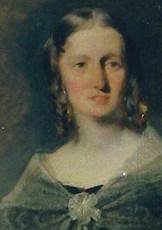Introduction
Edward Lloyd was one of the 19th century’s most succesful newspaper proprietors. His two titles—Lloyd’s Weekly Newspaper and The Daily Chronicle—were among the century's best sellers, and Lloyd’s Weekly Newspaper was the first newspaper in the world to achieve a circulation of one million copies. Nevertheless, he has seldom featured in histories of the British newspaper industry which often fail to see past The Times.
The first half of the nineteenth century saw an incredible growth in literacy amongst working people. In addition to his newspapers, Lloyd was a prolific publisher of “penny serial novels” in the 1830s and 40s, having more than 200 titles to his name including the infamous Sweeney Todd. These works were always offered at the affordable price of just one penny and sold very well.
Lloyd has been honoured as the ‘Father of the Cheap Press’, but although cheap, his papers made no concessions in terms of vocabulary, syntax or verbosity unlike today’s tabloids, and their coverage of foreign news matched that of the modern broadsheet. It could be said that he not only fostered literacy but also helped to bring a broader education to the masses.
Lloyd’s own background was neither privileged nor destitute. His father was in trade in the City of London as a cloth merchant but always precariously—he was adjudged bankrupt three or four times. Nevertheless, his parents appear to have brought up their three sons supportively and imbued with sound values. The eldest, Thomas, had a successful medical career although the middle son, William, fell by the wayside and died an alcoholic.
Edward attended school until 14, signed on as a solicitors’ clerk for a short time and started printing popular items like cards and song-sheets soon after he left school. He was able to draw on the technical knowledge he was gaining in the evenings at the London Mechanics Institute.
From the mid-1830s when he had a family to support, serialised fiction secured a more regular income. By the mid-1850s he had published over 200 ‘romances’. These included the penny serials, Dickens parodies, and many more serialised tales of love and adventure. These found a ready market, particularly among impecunious women readers who had previously been ignored by publishers.
Traces of Lloyd’s early publishing are scarce as much of it was by its nature ephemeral—published weekly and sold cheaply. By the end of the 1850s, Lloyd was concentrating more on his newspapers than his fiction and held a remainder sale in 1861 of all his left over stock.
He published his original Lloyd’s Penny Illustrated Newspaper in 1842, unstamped and priced at one penny but despite containing no news, after only seven issues, the Stamp Office demanded that it be stamped. He immediately relaunched his title as Lloyd’s Illustrated London Newspaper with illustrations, stamped and priced at two pence. Wanting to keep the newspaper competitive, he also increased the number of columns to five, pointed out that the Stamp removed the previous restrictions on the paper’s content and carried the benefit of post-free delivery all over the country, which was important as newsagents had been reluctant to stock the paper at such a low cost.
After another seven issues, on 15th January 1843, Lloyd relaunched it as Lloyd’s Weekly London Newspaper without the illustrations at two pence ha’penny. In this form, it competed with other inexpensive Sunday publications, such as The News of the World, Reynold’s Weekly Newspaper, The Weekly Times, and The Weekly Dispatch.In September 1843 the price was raised to three pence.
It was only when all the so called Taxes on Knowledge (Newspaper Stampy Duty, Advertising Duty and Tax on Paper) were abolished that he could finally reduce the price of his newspaper to one penny.In addition to Lloyd’s continuous innovations in printing — including the introduction of the rotary press for newspapers — he set up a paper mill to make his own newsprint. He first used home-grown straw and later harvested a vast crop of esparto grass on land he leased in Algeria before both were superseded by Scandinavian softwood. The mill he built at Sittingbourne in Kent grew huge. His son Frank ran it after his father's death and by 1912, it was the largest in the world.
Lloyd made his entry into daily newspapers with The Daily Chronicle in 1876. It was a success from the start, which was just as well—he had spent £180,000 on buying and transforming a local paper and setting it up for mass production.
After an illness in 1889, he formed Edward Lloyd Ltd. He owned 1,214 of the 2,500 shares and left these in a trust for his children under the will he drew up at the same time (see Will). The remaining shares, a majority interest, were to be held by four of his sons in trust for his grandchildren. When he died on 8 April 1890, he left an estate worth about £565,000. The rather larger part of his business already in the family trust would have taken his net worth in 1889 closer to £900,000.

